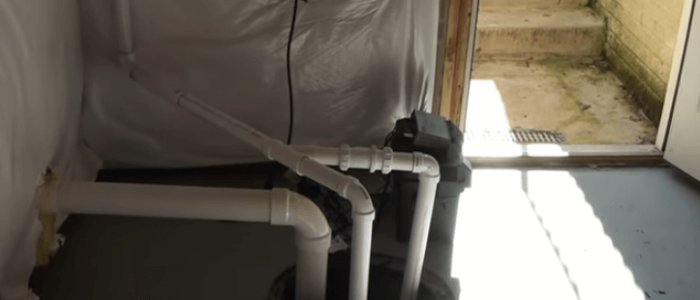A Basement Sump Pump For Maximum Waterproofing Protection
Article Chapters
A Basement Sump Pump – Increasingly A Property’s Added Value Asset
A sump pump in the basement. Once upon a time, it would likely have raised an awkward question or two by an eagle-eyed buyer at a house viewing, e.g. “Is there a problem with water entering the house?” or “Is this house built on a flood plain?” Today, we live in a very different world. The catastrophic effects of climate change are increasing in volume and frequency.
February 2020 was the wettest month in England and Wales in more than 250 years. An average month of rain fell in just 24 hours in some areas causing extreme flooding to around 1,400 properties. The presence of a fully working sump pump installed in a cellar, basement or any type of living space below ground level is now more likely to be seen as a most important asset that adds value to a property.
Around three million dwellings are thought to be susceptible to surface water flooding alone. The risk of extreme flooding events across many parts of Britain is also not limited to coastal populations or those living near main rivers or tributaries. One in six properties – more than 5.2 million – across England and Wales are at risk of any type of flooding, according to the Environment Agency. Another 45,000 households, at least, could be at the highest category of flood risk by 2050.
Sump pump – not moisture coatings – most effective method of water removal
A decade ago, around half (55 per cent) of British homeowners knew they were living in a flood risk area, of which, 3 in 5 (60 per cent) had prepared for extreme rainfall events by installing flood resistance measures. Unfortunately, preparations could sometimes include simply brushing on a moisture barrier to the foundation wall brickwork, which was unlikely to be effective against water ingress. Over time, both the applied coating and the foundation can often develop hairline cracks, which increasingly allow water to infiltrate the concrete floor or the joint between the floor and the wall.
Today, effective water removal is increasingly uppermost on a property-owner’s agenda. Especially, if planning to convert a basement space into a spare bedroom, home office, gym or games room. A sump pump is recognised as the most effective method to help keep a basement floor area dry during outside wet conditions. The ability for a sump pump to remove a large volume of water in a short period of time – via an impeller forcing water through to the discharge pipe – will prevent a basement space to become overwhelmed by surging water, and is critical during extreme rainfall events.
Best sump pumps have built in floor drain, an airtight cover and battery back up
A number of the best sump pumps are accompanied by a built-in floor drain to deal with everyday, common plumbing leaks, as well as providing maximum waterproofing protection. The removal of water downwards is designed to prevent moist air from rising and damp to spread into the basement interior. An airtight sump cover is fitted to help minimise any noise by the pump while in operation.
In some larger basement spaces, one sump pump may not be enough and two pumps are required. However, its almost always advised to install a sump pump that incorporates a battery backup system. It’s not just in the rare event of a power cut but a sump pump can fail if, for example, there is a mechanical failure – often caused by a clogged or jammed float switch, or a blocked discharge pipe. Other reasons can be a blown fuse or a pump becomes accidentally unplugged or disconnected.
Clearly, regular maintenance and servicing can help prevent many of the unnecessary causes of pump failure. However, if a sump pump failure does unexpectedly occur, a battery back up should last an average of 5 – 6 hours of continuous use. The total lifetime of a battery back up can be 3 – 5 years, depending on a regular and thorough, service contract schedule.

